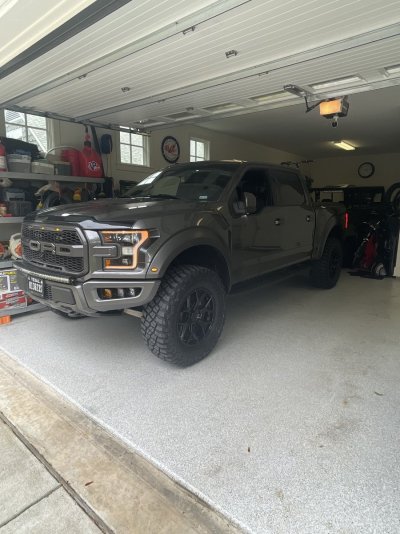I think the hard thing with giving any advice on this is that there's a question behind the question, and that will (largely) determine the answer.
Raptors are special performance trucks. They are designed to do Raptor things, even though a good number of Raptor owners never (or hardly ever) do Raptor things with their trucks.
If you want 37's for looks and appearance purposes, and don't plan to ever fully utilize the suspension (with potentially grave consequences if you do), then it is easy to get to 37's. A 2.25 perch collar (e.g. the RPG
https://www.rpgoffroad.com/product/raptor-coil-spring-perch-collar-3/) will get you to 37's with a little rubbing when turning and severe problems at full articulation, but for the grocery store it will look nice. But if you ever fully compress your suspension you'll rip your fenders right off, shred your tires, and have a major repair bill.
But if you want 37's for performance purposes, you'll need to think about your entire suspension and powertrain setup. You'll need to consider the effect of taller tires on gearing and the effect of the bigger tires on the moment of inertia. You'll need to look at the functional aspects of the suspension. "Lifting" like you would do on a non-performance truck can often negatively impact the Raptor's off road handling. You may be better getting a standard F150 and putting a Raptor grill on it if you just want the looks.
Fox Factory Race Series 3.0's have adjustability, but it's not the cheapest way. As others have mentioned, you'll get more performance from upgrading your 2018 shocks to 2019-2020 Fox live valve shocks with the SDI eClick performance module. You could use after market spring like Geiser or Eibach, or a perch collar to increase the front height, and aftermarket rear leaf springs like Icons or Deavers, to raise the rear. You could also consider rear bump stocks for the rear. At a minimum, you'd need to take care of the pinch welds and possibly remold your liners; to be certain you'd want to consider after market glass +2 fenders and bedsides. You also need to be careful of wheel offset (if you go after market). There's just not a lot of extra room. Ford engineers have done a great job taking advantage of every inch leaving very low tolerances for messing around.
Like
@Nex and others have said, you really need to start with why you want 37's and how you expect them to benefit you. Considering how you'll drive the truck will determine your course of action. You can spend a lot of money and achieve significant performance increases on your truck and never get to 37's, or you can easily get to 37's knowing that a trip down a dirt road could screw you up badly.




